
Balandra Bay
On to La Paz, the capital of Baja Sur. Sadly, we found our favorite RV park in La Paz is closed forever. We took a quick tour of the Malecón before driving to free camping at Tecalote beach. La Paz was hit hard by the November 2023 hurricane Otis, and the marina still shows signs of wreckage.

In the La Paz bay are reminders of Hurricane Otis

Another abandoned boat in the harbor.
At Tecalote we were in for another shock. On previous visits there were few campers: Only groups of Europeans in large fortress-like RVs and a smattering of others. But this time, nary a spot near the beach to be had. Apparently, the news is out. There were Canadians from at least 4 provinces, Europeans, and several US visitors. Some were spending the entire winter here in all manner of adapted buses and home-made campers as well as very deluxe models.

Lines of campers of all descriptions crowd the beach

The various home-made campers were impressive.

This one even has a screened back porch

A slide-out on an old Toyota…very well done
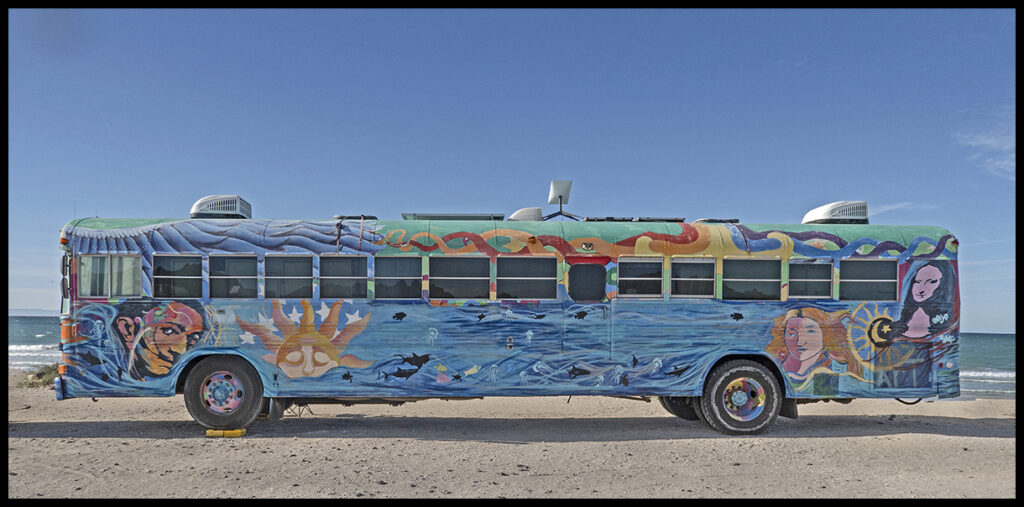
And how about this vintage Ken Kesey inspired bus.
We parked off in the desert and managed to find a quiet, isolated spot.

Our campsite; far from the madding crowds.

A camp visitor…Señor roadrunner.

Isla Espiritu Santo (Holy Ghost Island) is visible offshore.

Can’t help myself
There are signs of the hurricane along the beach

Hurricane damaged building…so much for the Bud Light party

Sign the worse for wear, also the roof partially collapsed

What this musical group lacked in talent they made up for in volume.
Nearby Balandra Bay now has timed entry because it’s too popular. However, it’s still lovely and with a kayak one can leave the crowds behind. Our little hidden mangrove bay is still there although the bird population is diminished.

Hidden mangrove lagoon with arid desert background.

One reddish egret noted our passing.
Leaving La Paz we stopped along a bay for lunch and were joined by these birds.

Pied Oystercatchers

Pelican ballet with a disinterested audience

When do we leave and where are we going?
Next stop south; Barriles. It’s one of a handful of cities nearly taken over by tourists. People from all over come here to spend weeks, or months. At the RV park where we stayed, some of the beach front spots are leased for years at a time, some for 25 years. People park their RVs here, buy a golf cart for local transportation and fly down every year to bask in the sun.
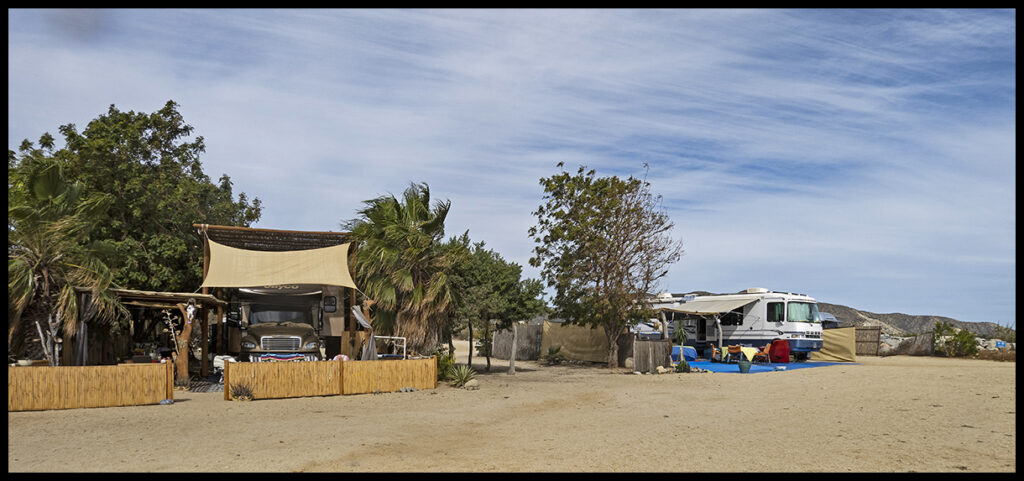
Permanent spaces at a Barriles RV park on the beach
On a visit 7 years ago, we drove south from Cabo Pulmo after waiting in vain for the wind to die down so we could go snorkeling. Rounding a point, the coast veers to the west and the beaches are less exposed to the north winds. The uninhabited beaches stretched for miles; nearly all the way to the Cabos. We said at the time, “if we get back here, let’s plan to camp on one of these gorgeous beaches”. So this year, after thrashing our way through the awful traffic in San José del Cabo, we turned north to see what we could find. Oh my! Estate builders have been working overtime to line the beaches for miles with enormous houses . After a few hours of driving on a miserable dirt road, we found a relatively open beach. There were a few other campers and some fishermen, but we’d finally escaped the grand haciendas. On the horizon were about 30 commercial fishing boats all lined up. Perhaps where the Gulf meets the Pacific Ocean there is especially good fishing?

Fisher folks on the beach
It is a lovely beach and we were treated to lots of humpback whales signaling to each other by flopping enormous pectoral fins on the water. They also did tail slaps. My 300mm lens is limited on such long-distance shots, but through the binoculars we were able to watch the show. Apparently it’s one way whales communicate with each other. Females slap their fins provocatively to attract males, or pairs of whales may pec slap to entice each other. Pretty sexy business: We were impressed and amazed at how many whales we saw.

Raise pectoral fin…

…and slap it down forcefully

Pelicans surf air currents over the breaking waves.

On the beach green rocks poked through the sand.

Large empty sea urchin shell. Urchins are delicacies for many sea creatures.

Turning inland the desert stretches for miles.
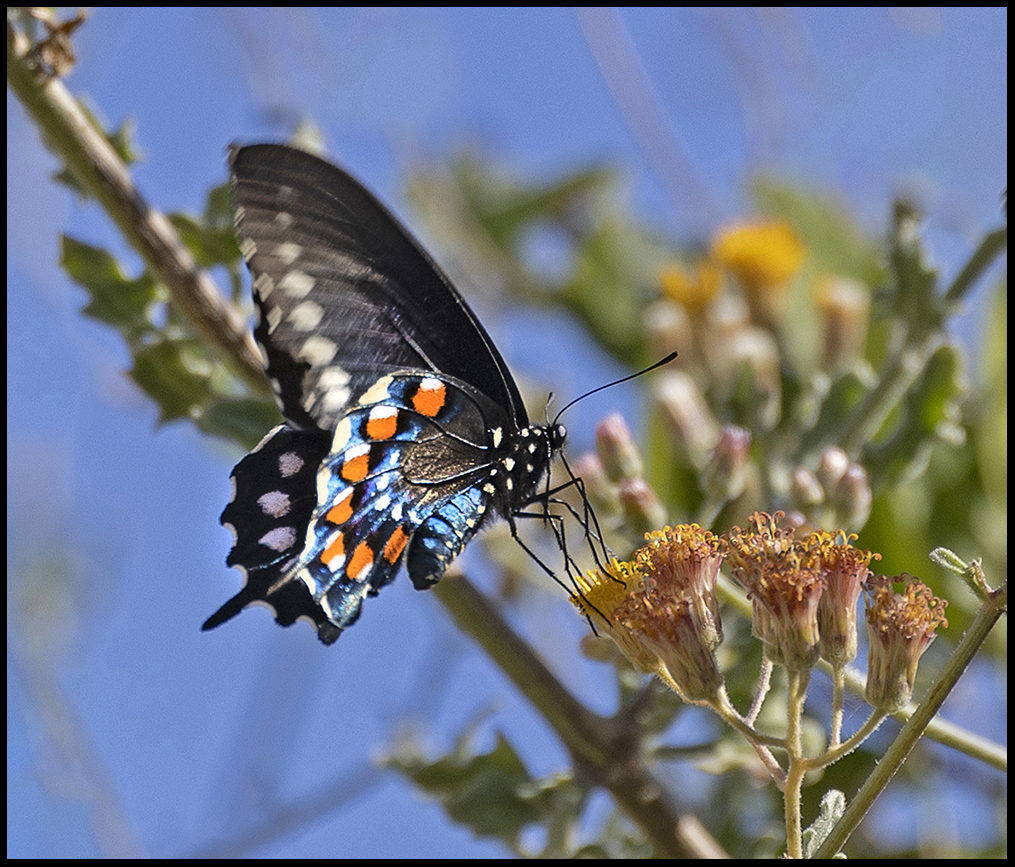
Pipevine Swallowtail

Lizards skitter in the underbrush
All in all, a lovely place to spend a couple of days, but we must keep moving.
So back through both Cabos on a 4-lane highway to the Pacific coast where it became a sleepy two lane highway and another of our all-time favorite camping spots. OH, expletive deleted!! Now the 4-lane express highway circles around, doesn’t even have an exit for our camp beach, passes the once quiet and charming Todos Santos (now a tourist hot spot featuring endless T-shirt shops) and zooms on to La Paz. We were back in La Paz in less than 2 hours. Spent the night in the desert. Bah.
Back in San Ignacio again we met another camper who chided us for missing the Santa Ines beach RV park. It wasn’t much of a backtrack so we checked it out the next day after restocking our date bread supply.

Camp spot at the quiet, delightful, family owned, Santa Ines RV park.

The endless beach of Santa Ines just past the northern end of Bahía Concepción.
We inflated our kayak and explored the endless beach. This time I remembered the little underwater camera. The snorkeling wasn’t great as the waves had muddied up the water, but it was still fun.

Underwater feathery plants.

Ubiquitous little yellow striped fish were at every beach stop on the gulf.

Underwater live urchin
We met some gringos from the states who live here during the winter and asked them about the suspicious fishing boat that appeared every day just off the point. They said the boats were fishing illegally. They had contacted the authorities to try to stop them, but were told to mind their own business.

Illegal fishing trawler off the point
Overfishing in the Gulf is a huge problem. Vaquitas (a species of small porpoise endemic to the gulf) are the world’s most endangered marine mammal. There may be only 10 left. Their depletion is due to entanglement in illegal gill nets.

Rafts of grebes were here plus pods of large black dolphins

Pelicans like offshore rocks to relax on

Scene of a Crime. In a crevasse behind the beach we found signs that a large bird had flown in with a huge sea snake to dine on. Clues were left behind.

Looking inland from the beach, it’s sere desert.

Mockingbirds do very well in desert environments

Time to say adios to Santa Ines and start homeward
We return to our San Felipe camp west of town. It’s the staging camp for our sprint across the border. (We don’t like the idea of dawdling in border towns.) On the way into San Felipe, we found flower beds stretching for miles. Never have we seen such a display in this area. The November rains were a blessing for some.

Fields of flowers stretched to the horizon
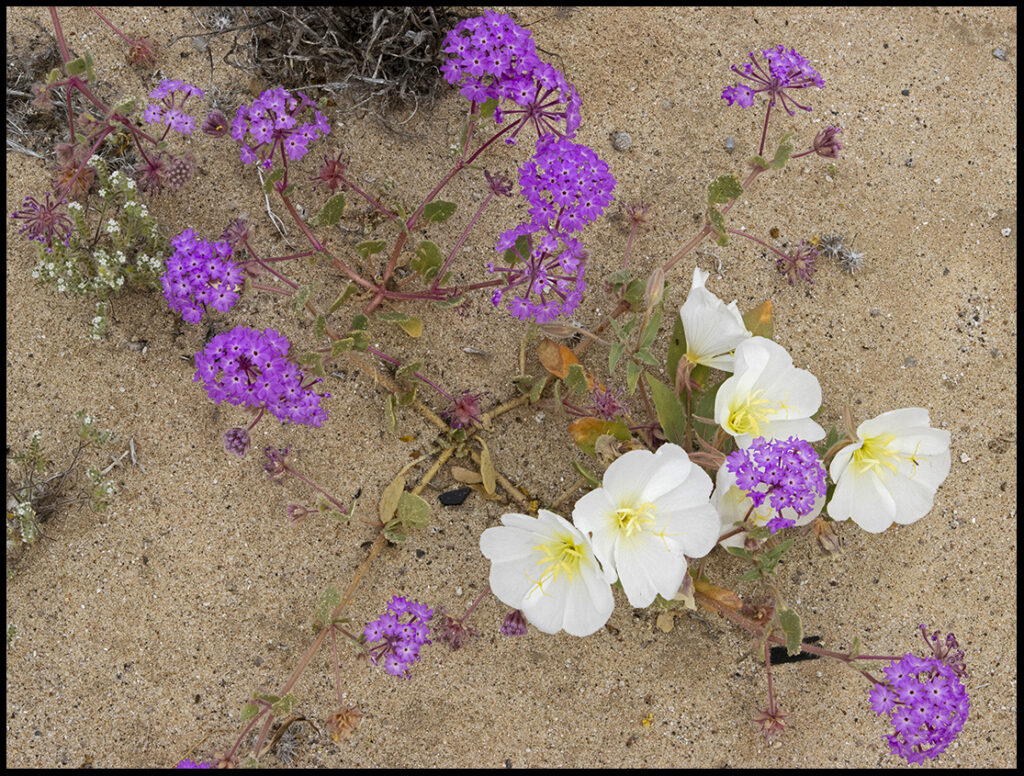
Sand verbena and primroses were the most common

Desert (or Ajo) lilies we’d seen before but never in such numbers
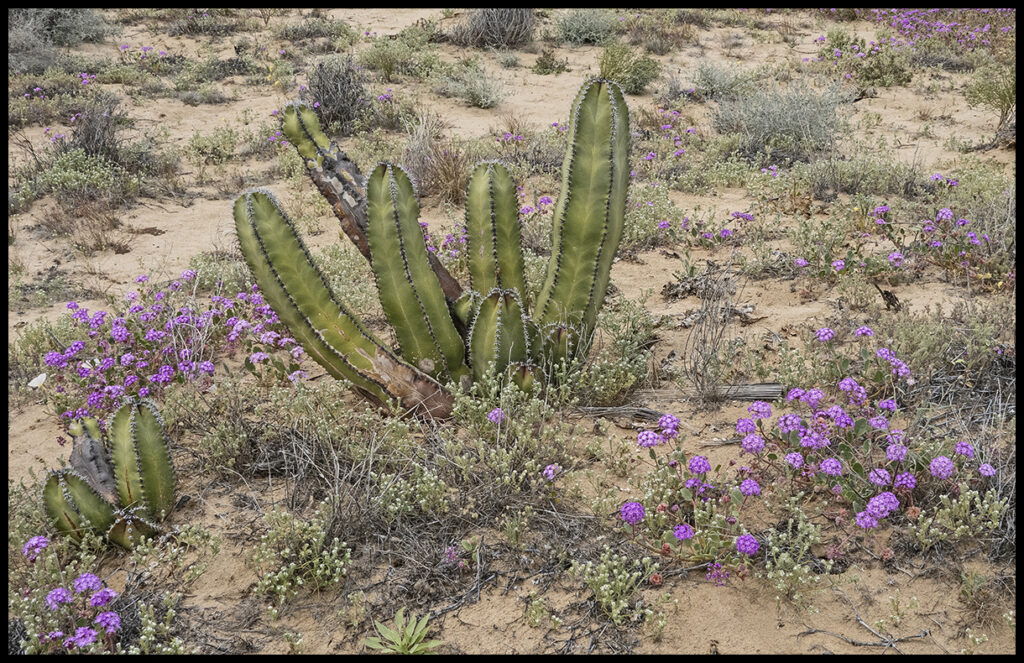
A few scattered cactus add to the desert ambiance

Desert Globe Mallow blooms for a long time
At the wash where we made camp were more flowers and an insistent hummingbird begging me to take his picture.
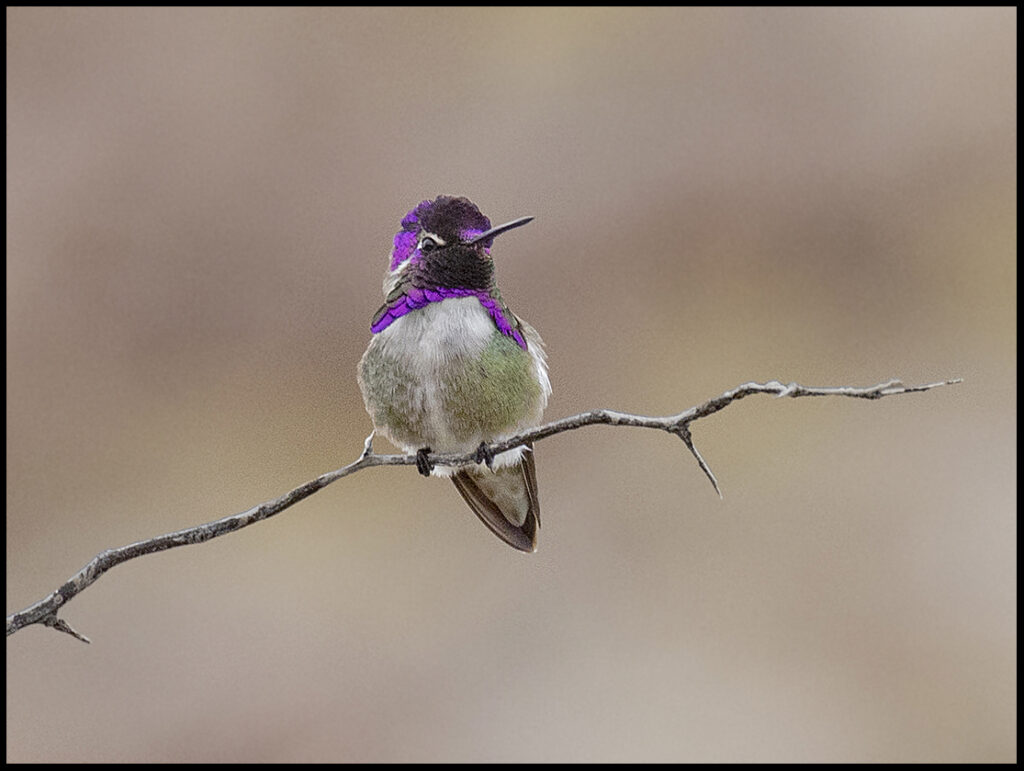
Costa’s Hummingbird showoff

Chuparosa or Hummingbird bushes were now in full bloom

Chuparosa flowers close-up

Many more pretty flowers

Just a few more…

…before we say Hasta la Vista…until next time.
Thanks to all who have accompanied us on another Baja Adventure.
